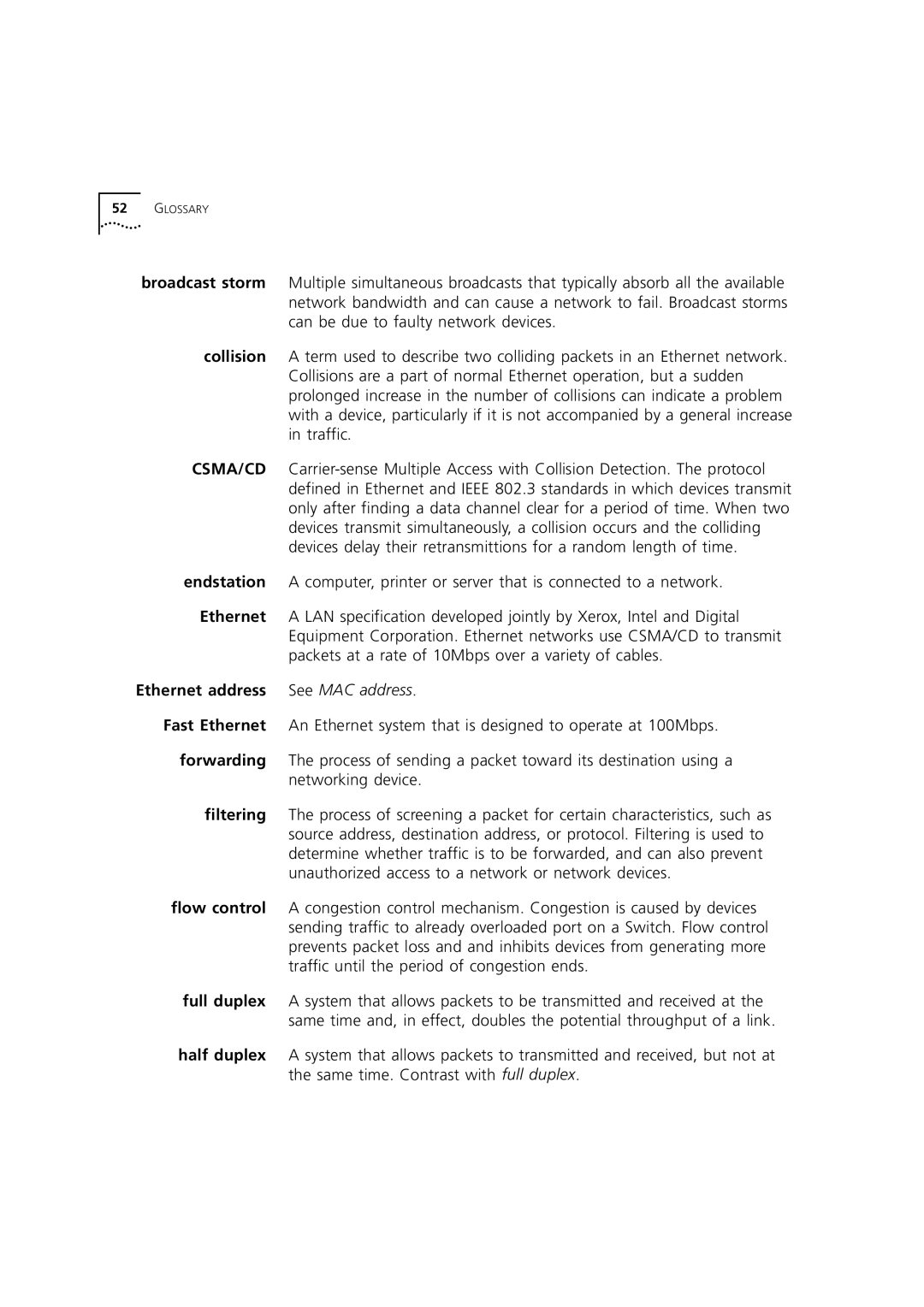
52GLOSSARY
broadcast storm | Multiple simultaneous broadcasts that typically absorb all the available |
| network bandwidth and can cause a network to fail. Broadcast storms |
| can be due to faulty network devices. |
collision | A term used to describe two colliding packets in an Ethernet network. |
| Collisions are a part of normal Ethernet operation, but a sudden |
| prolonged increase in the number of collisions can indicate a problem |
| with a device, particularly if it is not accompanied by a general increase |
| in traffic. |
CSMA/CD | |
| defined in Ethernet and IEEE 802.3 standards in which devices transmit |
| only after finding a data channel clear for a period of time. When two |
| devices transmit simultaneously, a collision occurs and the colliding |
| devices delay their retransmittions for a random length of time. |
endstation | A computer, printer or server that is connected to a network. |
Ethernet | A LAN specification developed jointly by Xerox, Intel and Digital |
| Equipment Corporation. Ethernet networks use CSMA/CD to transmit |
| packets at a rate of 10Mbps over a variety of cables. |
Ethernet address | See MAC address. |
Fast Ethernet | An Ethernet system that is designed to operate at 100Mbps. |
forwarding | The process of sending a packet toward its destination using a |
| networking device. |
filtering | The process of screening a packet for certain characteristics, such as |
| source address, destination address, or protocol. Filtering is used to |
| determine whether traffic is to be forwarded, and can also prevent |
| unauthorized access to a network or network devices. |
flow control | A congestion control mechanism. Congestion is caused by devices |
| sending traffic to already overloaded port on a Switch. Flow control |
| prevents packet loss and and inhibits devices from generating more |
| traffic until the period of congestion ends. |
full duplex | A system that allows packets to be transmitted and received at the |
| same time and, in effect, doubles the potential throughput of a link. |
half duplex | A system that allows packets to transmitted and received, but not at |
| the same time. Contrast with full duplex. |
